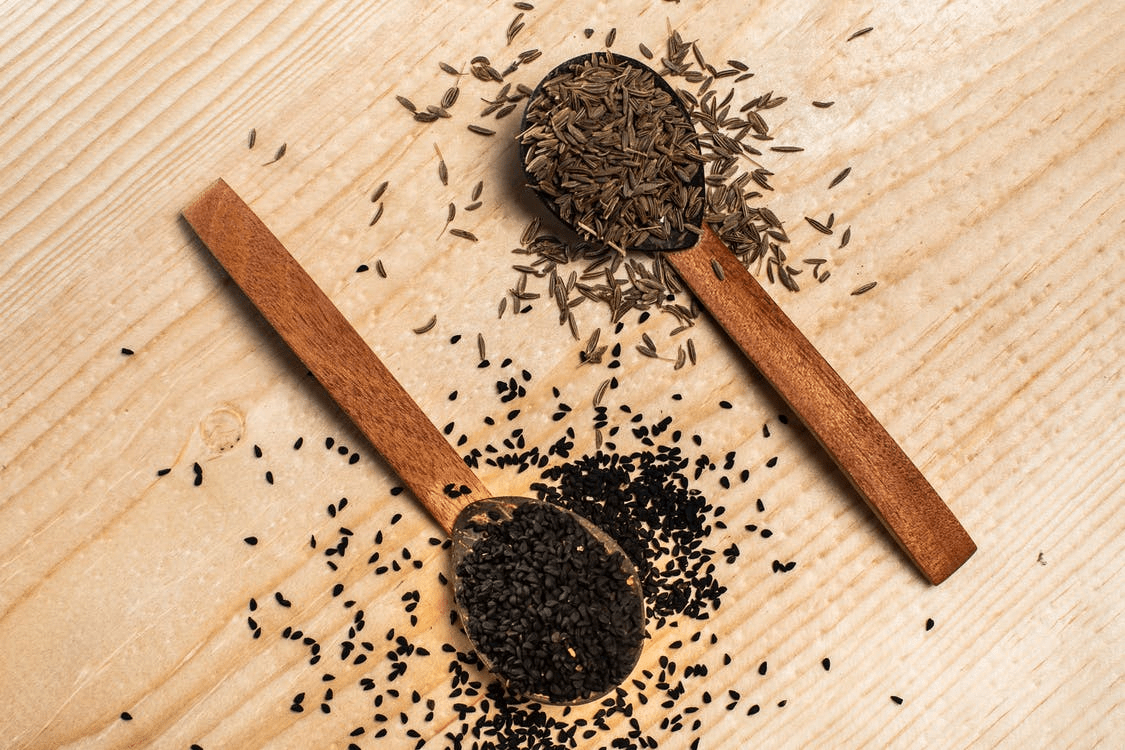
There are different ingredients that are being used for vitiligo treatment at home
If you have vitiligo, you’re not alone. Vitiligo affects about 1% of the world’s population. While there is no definitive cure for vitiligo, there are vitiligo treatments and remedies that can help improve the appearance of your skin. There are many vitiligo treatments that you can do at home, but we have brought you the best remedies to cure vitiligo backed by scientific research and data.
So without further ado, let’s dive into them.
Turmeric
Tumeric is the most common home remedy for the treatment of vitiligo patches. It is popularly used as a thick paste formed by mixing turmeric with a little bit of mustard oil. It is then applied to the skin where white patches are present. Those with mild to severe vitiligo who cannot bear the side effects of conventional medication may benefit from using turmeric as adjuvant therapy or alternative treatment in conjunction with other therapies.
Turmeric’s main constituent, curcumin, is a pleiotropic compound initially discovered to have antibacterial properties in 1949. Since then, this compound’s anti-inflammatory, hypoglycemic, antioxidant, wound-healing, and antibacterial properties have been discovered.
According to one study, Turmeric paste used with phototherapy has shown remarkable results in the repigmentation of the skin. It quotes, “Targeted narrowband UVB phototherapy plus topical Tumeric cream was slightly more effective than targeted narrowband UVB monotherapy”.
Application
Use the Tumeric and Mustard Oil paster twice a day for effective results. Turmeric can also be consumed by mixing it with a hot cup of milk. Turmeric milk should be consumed once before night, and Tumeric paste can be applied to the affected area twice or thrice a day.
Barberry root
Barberry root has been used for centuries for the treatment of vitiligo. It is only recently that science has started to prove its effectiveness.
Many molecules and bioactive substances of medical importance are found in barberry root (Berberis vulgaris). It contains alkaloids like berberine and oxyacanthine. In addition, it is high in B-vitamin thiamine and minerals, including zinc, chromium, and cobalt. This herb’s antioxidant and cytoprotective qualities have been studied and showed remarkable results for treating vitiligo. These properties help stimulate pigmentation in the skin, especially when combined with UV treatment.
Berberine and oxyacanthine are powerful phytochemicals with various medicinal properties, including immune-modulating and anti-inflammatory properties.
Most specifically, it appears to have a role in
- It neutralizes hydrogen peroxide, which is created by keratinocytes when exposed to oxidative stress. Hydrogen Peroxide destroys melanin (skin pigment), creating white patches.
- It also aids in the regeneration and growth of melanocytes and stimulates pigment synthesis.
- It moreover helps to stimulate tyrosinase, a critical enzyme in the conversion to produce pigment in the skin.
Application
Tea, tincture, capsule, fluid extracts, dried herb, tablet forms, and topical ointment are all accessible barberry forms. Barberry does not have a standard daily dosage: The berries should be consumed in two to six grams or an equal quantity.
Honey
According to the survey done by a group of researchers on vitiligo treatment at home, honey was the most common home remedy used by vitiligo-affected people. There’s a good reason why honey is readily available and shows outstanding results. The research was done on a patient affected by generalized vitiligo with no familial history of the ailment. The patient was asked to take two tablespoonfuls of honey mixed with one cup of boiled milk in the morning daily. White de-pigmented skin was observed to be partially re-pigmented after four months with the reversal of disease progression.
Honey has the following properties that are great for curing vitiligo.
- Honey is a natural moisturizer that helps keep the skin hydrated and soft.
- It contains anti-inflammatory effects that assist in relieving inflammation and soothing the skin.
- Additionally, it is a natural antioxidant that aids in the defense of the skin against free radical damage.
- It contains enzymes that promote wound healing and help to keep the skin healthy and free from infection.
- Honey can help lighten the skin and reduce the appearance of white patches caused by vitiligo.
Application
The most effective way is to drink honey with milk early in the morning. You can also apply honey to the white patches. Honey is safe to consume as much time as you want in a day; in case of diabetes or other underlying health condition, use it once in the morning.
Nigella Sativa
According to the survey, Nigella Sativa is the second most common remedy used for curing vitiligo. N. Sativa contains fixed oil rich in unsaturated fatty acids, and the major constituent, thymoquinone, has been widely used in traditional medicinal applications.
Thymoquinone found in Nigella Sativa is a very effective compound with the following benefits:
- Anti Inflammatory effects help to reduce the swelling and relax the skin.
- Thymoquinone has also been found to exhibit an antioxidant effect, decreasing the oxidative stress experienced on the vitiligo-affected skin.
- It also aids in the regulation of the immune system and has been successfully employed in immunotherapy and cancer-curing medications.
Moreover, according to studies, a topical cream containing N Sativa seed oil has shown effective significant repigmentation in 6 months. Another research comparing the effects of fish oil and Nigella Sativa showed that after six months, the mean score of VASI (Vitiligo Area Scoring Index) decreased from 4.98 to 3.75 in patients applying topical Nigella sativa and was also found to be more effective than fish oil.
Application
Nigella Sativa can be used as capsules, topical creams, tea, or fluid extracts. Use this twice or thrice a day for effective results. The efficacy of Nigella Sativa has been proven by small studies repeatedly.
Sun Exposure With Vitamin B12 & Folic Acid
Contrary to many beliefs that the sun can cause issues with vitiligo-affected skin, the sun actually can be a vital game-changer when it comes to repigmentation of the skin. According to a two-year-long clinical trial, One hundred individuals with vitiligo were treated with oral folic acid and vitamin B12 after finding that sun exposure aided repigmentation. Six patients had complete repigmentation, and the spread of vitiligo was prevented in 64 percent of individuals after six months of therapy. Using supplements of folic acid and vitamin B12, along with sun exposure, causes repigmentation more effectively than either the vitamins or exposure to the sun alone.
Sun exposure with B12 and folic acid supplements has shown significant improvements in many patients.
Application
To do sun therapy, take vitamin B12 and folic acid supplements daily and soak under sunlight in summers and UVB irradiation in winter for how much time you feel comfortable. Note that you don’t want sunburn or change in contrast to your skin, as exposure will do. In order to keep the white spots from returning, the treatment should be continued.
Vitiligo Organics
Vitiligo Organics is an all-natural repigmentation cream that offers quick results within weeks. It has the perfect blend of organic herbs that stops the spread of vitiligo and restores your skin to its original condition.
They offer a money-back guarantee, and all their claims are backed by authentic research. For more information, tap here.
Conclusion
These are some of the best vitiligo treatments which can be done at home without any hassle. In order for these remedies to work like a charm, you should also consider eating a healthy diet containing zinc, copper, and vitamins, drinking plenty of water, and practicing yoga. Unnecessary mental stress can lessen the potential benefit of a home remedy.
Note: This information is provided based on published research, but it is still not a piece of qualified medical advice.






